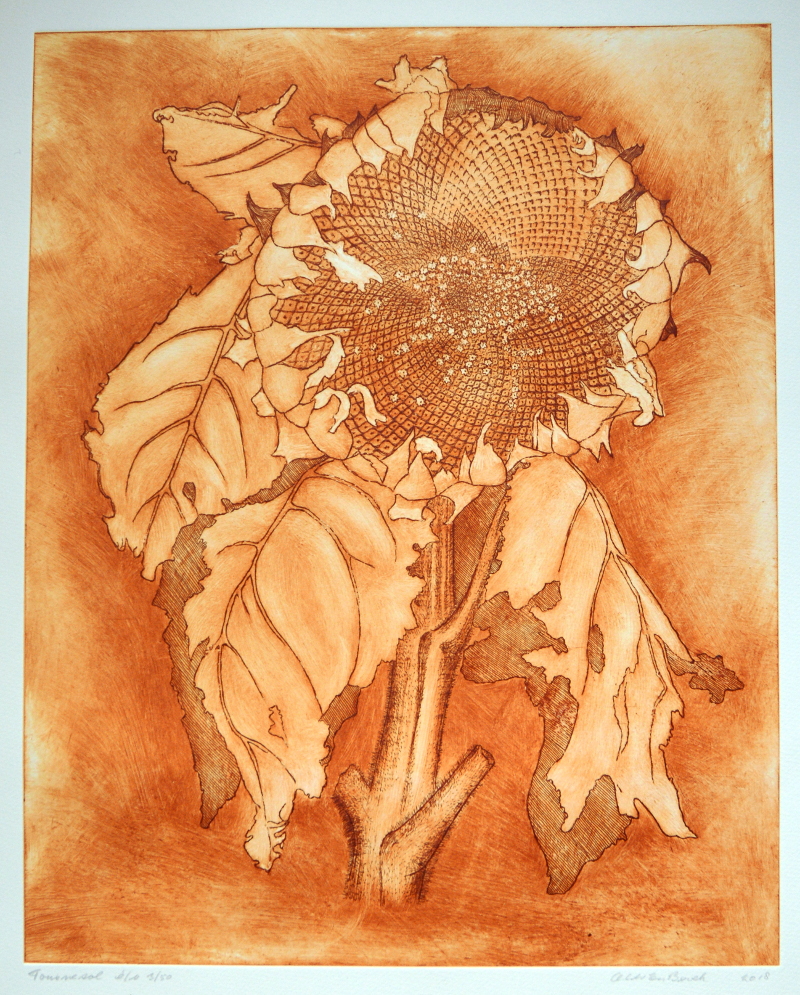
Sunflower seedhead. Etching on copper plate with Edinburgh etch mordant.
To cover material about etching as a process and the printing of the intaglio plates would be impossible to do in a single webpage as it is a very extensive subject. In the subsequent web pages I talk about some methods of “safe” etching, using “Bordeaux etch” and “Edinburgh mordant”. Included a note about the making of a “drypoint” etching. On this page it is just about the history of etching, be it very brief.
It was Daniel Hopfer, around 1470-1536 of Augsburg in Swabia, Bavaria who saw that he could use it to produce multiple prints after a life of decorating armour and weaponry.
It was soon recognized during the Renaissance in Italy, that it was a much easier method to produce printable copper plates then the much more difficult method of having to engrave them. You just needed to draw like an angel.
About a hundred years on it was Jacques Callot 1592-1635 from Nancy in Lorraine who developed some very handy improvements to advance the technique of etching. One of them was his invention of the “échoppe”, an etching needle with on one end has a slanting oval section so you could change the thickness of the line, “swelling the line”. He also greatly improved the grounds used to protect the plate from the mordant. One technique he improved and used extensively was “stopping-out”, where you interrupt the etching process to varnish over areas where you want to achieve a lighter tone.
All images copyright © to acw ten broek


Woodcuts
wouter@acwwoodcuts.com
42 Rue Grand'Rue
11240 Belvèze du Razès
France +33 (0)4 30 07 30 80